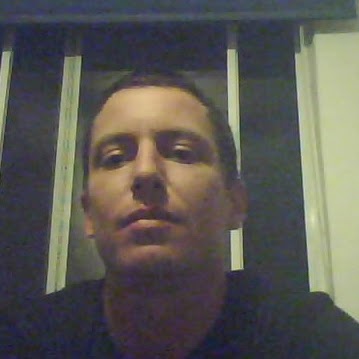Samuel O Owen
age ~79
from Sandy Hook, VA
- Also known as:
-
- Samuel D Owen
- Samuel O Owens
- Samuel O'Owen
Samuel Owen Phones & Addresses
- Sandy Hook, VA
- 1533 Rudds Store Pl, Herndon, VA 20170
- Lottsburg, VA
- 11451 New Farrington Ct, Glen Allen, VA 23059
- Rockville, VA
- Manakin Sabot, VA
- Mineral, VA
- Austin, TX
- Golden, CO
- Hanover, VA
Work
-
Company:Owen, samuel j
-
Address:350 Indiana St # 150, Lakewood, CO 80401
-
Phones:(303)2710222
-
Position:Partner
-
Industries:Legal Services
Isbn (Books And Publications)

Medicine Doctors

Samuel Craig Owen
view sourceName / Title
Company / Classification
Phones & Addresses
Partner
Owen, Samuel J
Legal Services
Legal Services
350 Indiana St # 150, Lakewood, CO 80401
Website: yourestate.com
Website: yourestate.com
Executive
Owen, Samuel J
Legal Services
Legal Services
350 Indiana St # 150, Lakewood, CO 80401
Website: yourestate.com
Website: yourestate.com
Principal
Sjo Holdings, LLC
Holding Company
Holding Company
6111 Bangor Dr, Alexandria, VA 22303
Owen Trucking, LLC
Local Trucking Operator Trucking Operator-Nonlocal
Local Trucking Operator Trucking Operator-Nonlocal
10132 Giles Run Rd, Lorton, VA 22079
PO Box 1595, Lorton, VA 22199
(703)5415501, (703)5413862
PO Box 1595, Lorton, VA 22199
(703)5415501, (703)5413862
S. & C. OWEN LIMITED
JAS VENTURES, LLC
Director
HCA INFORMATION SERVICES, INC
Director
RURAL HEALTHCARE OF AMERICA, INC
Us Patents
-
Systems, Devices, And Methods For Treating Vestibular Conditions
view source -
US Patent:20220279292, Sep 1, 2022
-
Filed:Feb 11, 2022
-
Appl. No.:17/669797
-
Inventors:- Washington DC, US
Samuel Jeffrey OWEN - Alexandria VA, US
Didier DEPIREUX - Ellicott City MD, US
Robert TRUE - Pleasant Prairie WI, US -
International Classification:H04R 25/00
A61M 21/00 -
Abstract:Apparatus and methods are described herein that provide a vibratory device that can apply a vibratory signal to a portion of a head of a user such that the vibratory signal can be conducted via bone to a vestibular system of the user and cause a portion of the vestibular system to move in a manner equivalent to that of a therapeutically effective vibratory signal applied to an area overlaying a mastoid bone of the user. The vibratory device can be associated with frequencies less than 200 Hz. The vibratory device can be effective at treating a physiological condition associated with the vestibular system.
-
Systems, Devices, And Methods For Treating Vestibular Conditions
view source -
US Patent:20210321205, Oct 14, 2021
-
Filed:Jul 6, 2020
-
Appl. No.:16/921484
-
Inventors:- Washington DC, US
Samuel OWEN - Alexandria VA, US
Didier DEPIREUX - Ellicott City MD, US
Robert TRUE - Pleasant Prairie WI, US -
International Classification:H04R 25/00
A61M 21/00 -
Abstract:Apparatus and methods are described herein that provide a vibratory device that can apply a vibratory signal to a portion of a head of a user such that the vibratory signal can be conducted via bone to a vestibular system of the user and cause a portion of the vestibular system to move in a manner equivalent to that of a therapeutically effective vibratory signal applied to an area overlaying a mastoid bone of the user. The vibratory device can be associated with frequencies less than 200 Hz. The vibratory device can be effective at treating a physiological condition associated with the vestibular system.
-
Device For Mitigating Motion Sickness And Other Responses To Inconsistent Sensory Information
view source -
US Patent:20180256444, Sep 13, 2018
-
Filed:May 15, 2018
-
Appl. No.:15/980124
-
Inventors:- Washington DC, US
Samuel Jeffrey OWEN - Washington DC, US -
Assignee:Otolith Sound Inc. - Washington DC
-
International Classification:A61H 23/02
A61H 23/00
A61H 21/00 -
Abstract:Embodiments disclosed herein mitigate motion sickness by disrupting, controlling, or influencing anatomy of the vestibular system. An embodiment may induce vibrations in the vestibular system, including otoliths and/or semicircular canals of the inner ear, causing noisy or unreliable sensory information to be sent to the brain from the vestibular system. Due to the noisy or unreliable quality, the brain, as part of a normal physiological response, may rely less on sensory information from the vestibular system and rely more on other sources, thereby mitigating the motion sickness response, vertigo, vestibular migraines, and other physiological responses to inconsistent sensory information. Vibrations in the vestibular system may be induced by an agitator placed on an individual's head near the vestibular system, or by a transducer placed near the eardrum or directly on an individual's head. Some embodiments may optionally include implantable components in addition to extracorporeal components.
-
Device For Mitigating Motion Sickness And Other Responses To Inconsistent Sensory Information
view source -
US Patent:20160089298, Mar 31, 2016
-
Filed:Sep 28, 2015
-
Appl. No.:14/867774
-
Inventors:- Washington DC, US
Samuel Jeffrey Owen - Washington DC, US -
Assignee:Otolith Sound Inc - Washington DC
-
International Classification:A61H 23/02
A61H 21/00 -
Abstract:Embodiments of the invention can mitigate motion sickness by disrupting, controlling, or influencing anatomy of the vestibular system, including, for example, otoliths, endolymph, and hair follicles. An embodiment of the invention may induce vibrations in the vestibular system, including otoliths and/or semicircular canals of the inner ear, thereby causing noisy or unreliable sensory information in signals sent to the brain from the vestibular system. Due to this noisy or unreliable sensory information, the brain, as part of a normal physiological response, may rely less on signals received from vestibular system and rely more heavily on other sources, thereby mitigating the motion sickness response, vertigo, vestibular migraines, and other physiological responses to inconsistent sensory information. Vibrations in the vestibular system may be induced by an agitator placed on an individual's head near the vestibular system. Vibrations in the vestibular system may also be induced by a transducer placed near the eardrum or directly on an individual's head. Embodiments of the invention may optionally include implantable components in addition to extracorporeal components.
Resumes

Samuel Owen
view sourceLocation:
United States

Cost Analyst At Tecolote Research Inc
view sourceLocation:
Washington D.C. Metro Area
Industry:
Defense & Space

Government Administration Professional
view sourceLocation:
Washington D.C. Metro Area
Industry:
Government Administration
Classmates

Samuel Owen
view sourceSchools:
Stony Creek High School Stony Creek VA 1966-1970
Community:
Frances Allen, Bucky Harrup, Timothy Tedesco, Junior Cates, John Rahman

Samuel Owen
view sourceSchools:
Mt. Zion High School Mt. Zion GA 1998-2002
Community:
Delenda Marks

Samuel Owen
view sourceSchools:
Chattahoochee Elementary School Duluth GA 1996-2000

Samuel Owen
view sourceSchools:
Junction City High School Junction City AR 1945-1949
Community:
Tedd Bryant, Antonette Toni, Angelia Dodgens

Samuel Owen
view sourceSchools:
Whiteville High School Whiteville NC 1938-1942
Community:
Jim Reece

Stony Creek High School, ...
view sourceGraduates:
Bootsie Winfield (1964-1965),
Roger Parham (1998-2002),
Samuel Owen (1966-1970),
Donald Upton (1966-1970),
Walter Shell (1965-1969)
Roger Parham (1998-2002),
Samuel Owen (1966-1970),
Donald Upton (1966-1970),
Walter Shell (1965-1969)

Northwestern Junior High ...
view sourceGraduates:
Earl Hutchens (1960-1961),
Robert Lane (1984-1988),
Samuel Owen (1995-1999),
Lindsay Morgan (1995-1999)
Robert Lane (1984-1988),
Samuel Owen (1995-1999),
Lindsay Morgan (1995-1999)

Junction City High School...
view sourceGraduates:
Samuel Owen (1945-1949),
Dianne Roberson (1963-1967),
Janelle Pratt (1971-1975),
Diane Noble (1975-1979),
Trent McLelland (1990-1994)
Dianne Roberson (1963-1967),
Janelle Pratt (1971-1975),
Diane Noble (1975-1979),
Trent McLelland (1990-1994)
Plaxo

Samuel Owens
view sourceHastings

President SAMUEL OWENS, Jr.
view sourceWest Palm Beach
Youtube
Flickr

Samuel Owen
view source
Samuel Owen Baker
view source
Samuel Owen Jr.
view source
Samuel Owen Williams
view source
Kato Samuel Owen
view source
Samuel Owen Pierce
view source
Samuel Owen
view source
Samuel George Owen
view sourceGoogleplus

Samuel Owen
Work:
Unemployed
Education:
Staffordshire University - Graphic Design

Samuel Owen

Samuel Owen

Samuel Owen

Samuel Owen

Samuel Owen

Samuel Owen

Samuel Owen
Get Report for Samuel O Owen from Sandy Hook, VA, age ~79













